There are A LOT of route optimization tools available on the market.
But not many of them are right for third-party logistics (3PL).
So this is a list of the 4 best route optimization solutions in 2024 SPECIFICALLY for 3PLs.
These amazing tools can help you raise operational efficiency by as much as 50%.
In fact, here’s what you can expect to save with the best tool on this list:

And in this guide, we’ll help you choose the best route optimization software for your business.
Let’s dive right in.
Best Route Optimization Tools for 3PL Service Providers
- eLogii
- Onfleet
- Optimoroute
- Road Warrior
#1 eLogii - Best overall route optimization solution
| TOTAL SCORE: |
4.5 |
| PRICE: |
from $359 |
| # OF TASKS (STARTER PLAN): |
2,500 |
eLogii is the best overall route optimization software. This feature-rich solution doubles as delivery management software that’s user-friendly, competitively priced, and with the best customer service on this list.
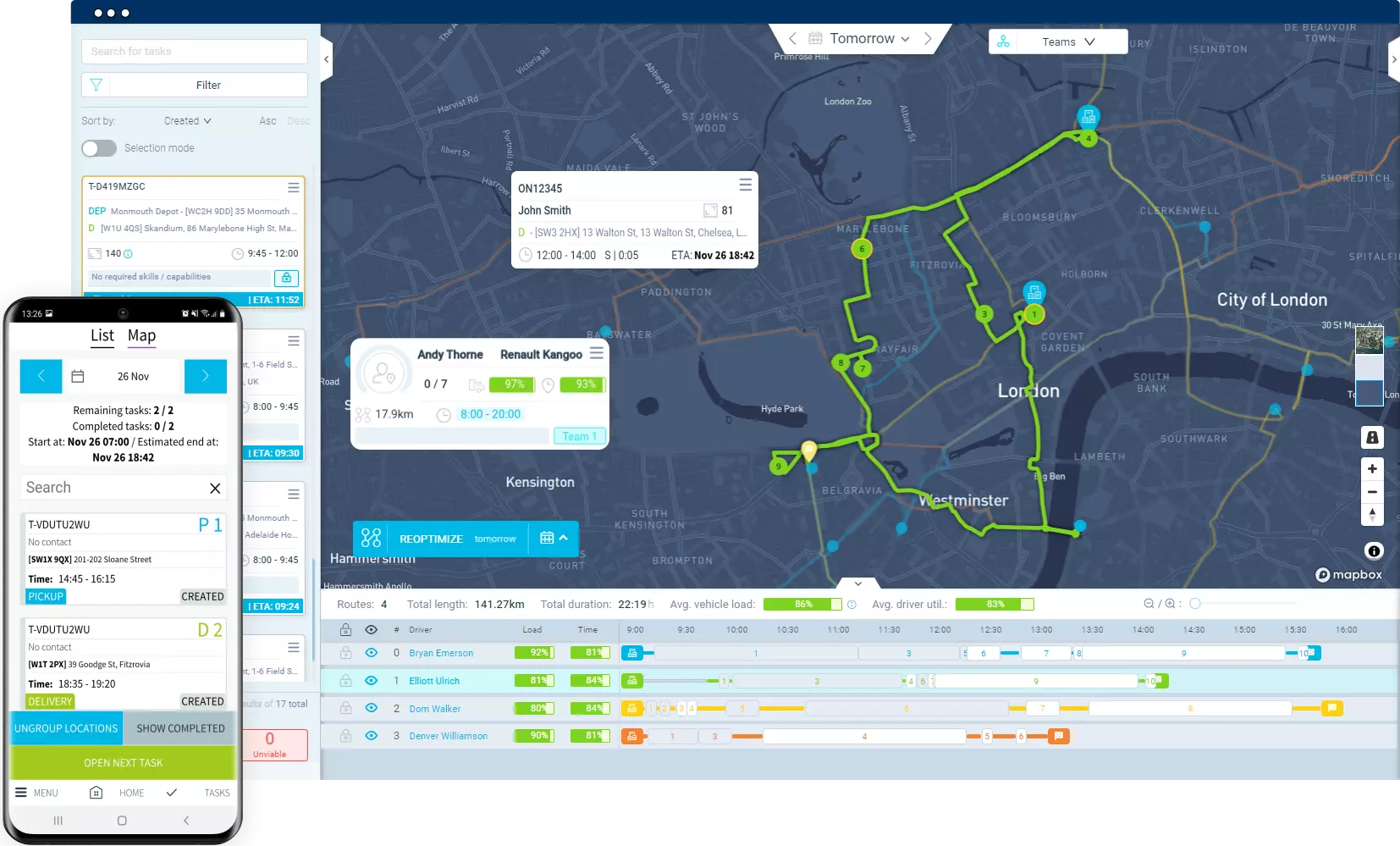
While eLogii doesn’t offer a free trial or free version, it offers a free demo booking. The demo is made to measure based on examples that you send over before the call. And covers only the features that you need and want to see in action. So no nonsense or wasting your time.
Plans start at $359 with an annual commitment. You can qualify for discounts if you subscribe to the software for more than one year (up to 30%). Or if you pay in full upfront.
But even with a starter plan you get access to more features than any other solution featured here. (Or anywhere else for that matter.)
Among the 47 features (!) that you get with the lowest tier, you get access to automated route optimization (for drop-offs and returns), live driver tracking and dispatching, ePODs, APIs and more.
See the full list of 98 software features (that you get with a premium plan)..
Apart from price, plans for this solution are different in the number of tasks that are included. But even with a starter plan eLogii includes 2,500 tasks per month - more than any other provider. The top-tier Professional plan includes 40,000 tasks with an option to add additional tasks for a fee.
All eLogii plans include unlimited drivers, vehicles, and users that you can set up:
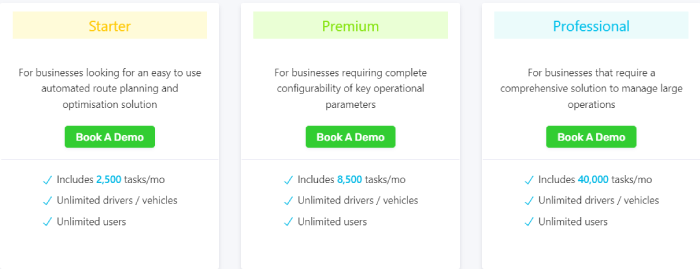
Proof of delivery with five ways of verification:
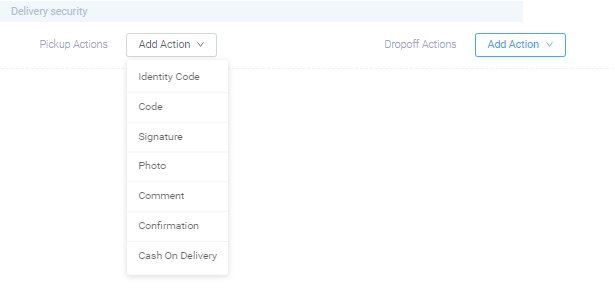
Status-triggered notifications that you can set up with live tracking links for email or SMS:
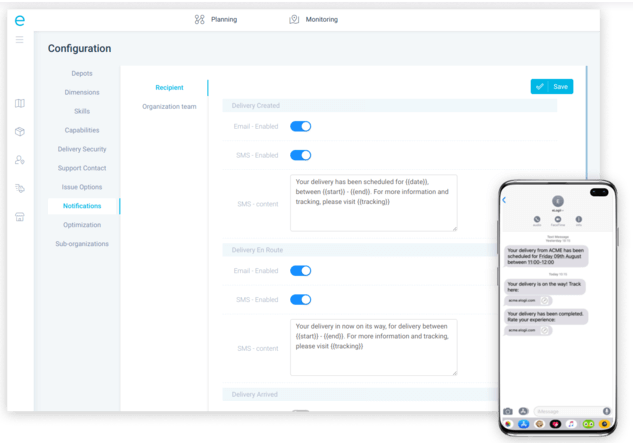
Free driver apps (for iOS and Android) with Google, HereMaps, or Waze navigation:
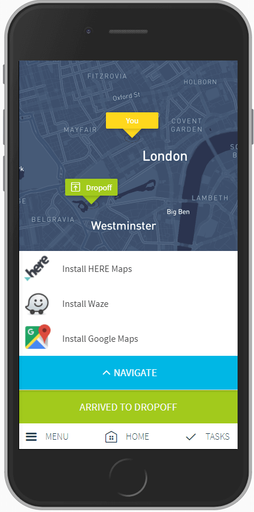
But what makes eLogii best overall is the end-to-end route optimization itself.
The dashboard has a clean and streamlined UI which you can use to plan and optimize routes in seconds without lagging (the fastest optimization on this list):
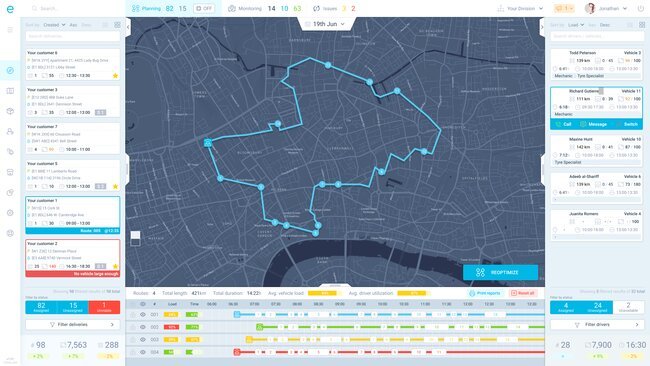
eLogii is also satisfyingly intuitive so you can plan routes for each driver in advance (days or weeks ahead of schedule), across multiple days (for longer routes), or dynamically (to squeeze as many drop-offs per route on-the-go).
To accomplish this, eLogii relies on automated dispatch and geo-coding that lets you track each driver and status of tasks live with real-time updates and estimated times of arrival (ETAs):
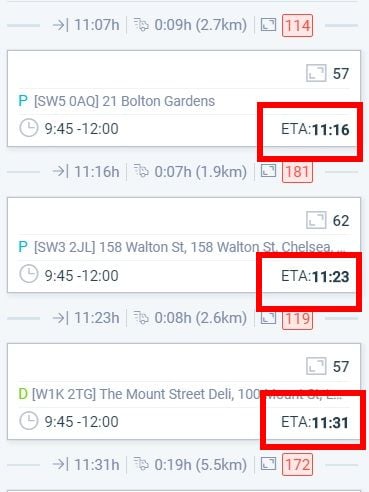
Adding tasks to the software is easier with CSV uploads in bulk or with custom integration via a developer-friendly API that can connect to top apps such as Shopify or WooCommerce.
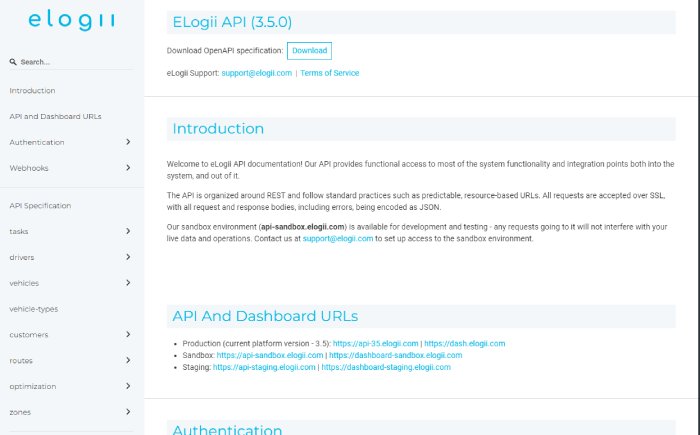
With a premium plan you can even map CSV imports.
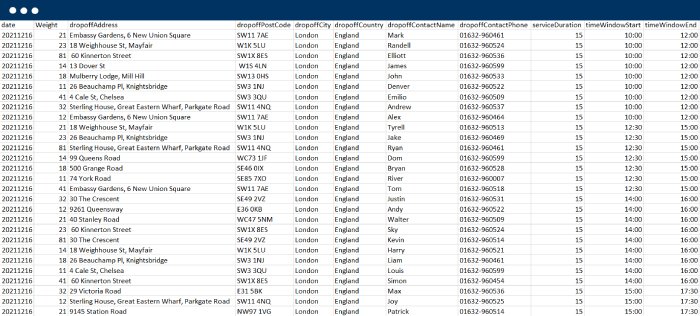
Support is offered through eLogii’s online Support Center, Help Center and messaging tickets. But also email and phone support. While both the driver app and dashboard have extra in-app multi-language support.
Who should use it: eLogii is an all-in-one end-to-end route optimization solution and delivery management platform. The software offers such a wide range of features and pricing options that it functions flawlessly and scales seamlessly for all types of 3PLs, regardless of their size, shape, or complexity.
Pros & Cons
Pros:
- Fast, intuitive, and reliable route optimization
- Real-time route tracking
- Unlimited drivers, vehicles, and users on all plans
- Complete fleet and task management
- Streamlined and easy to use UI
- Extensive feature customization
Cons:
- No free trial
- It’s lowest tier doesn’t offer white labeling

#2 Onfleet - Best for routing solution for small-to-medium fleet management
| TOTAL SCORE: |
4.2 |
| PRICE: |
from $349 |
| # OF TASKS (STARTER PLAN): |
2,500 |
Onfleet is another route optimization solution that doesn’t have a free version.
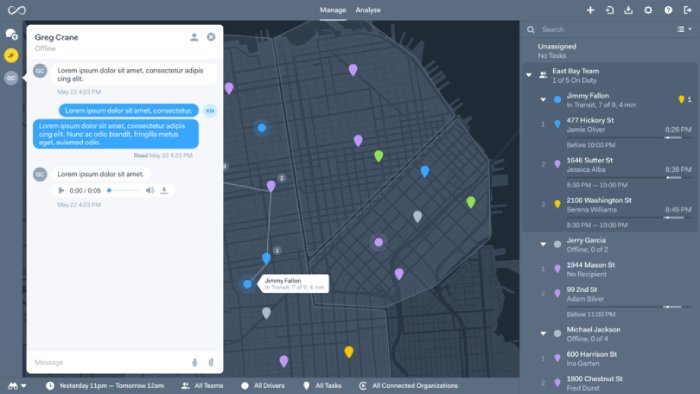
There is a free 14-day trial, so you can try out the software before committing to a specific plan. But expect to pay for all the features after the trial period.
Onfleet pricing plans start at $149, and go up to $1,999 per month:
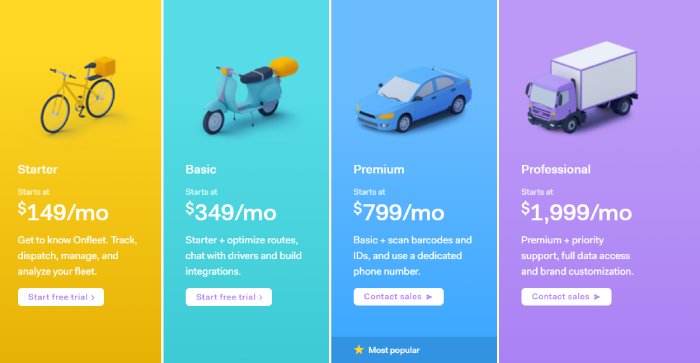
While the Starter plan is an extremely affordable option, it doesn’t include route optimization.
The lowest-tier plan that offers this feature is the Basic program that starts at $349. This price is restricted to annual billing. For month-by-month payments the subscription will rise to $449 per month.
Another principal difference between various plans is the limit of tasks. Basic plan limits you to 2,500 tasks and a $0.16 fee for additional tasks. This rises to 12,500 tasks with a Professional plan where the fee for additional tasks is $0.18.

What separates Onfleet from other solutions is that it’s integrated with Zapier even at the starter plan, which allows you to connect with top third-party apps like Shopify or Google Sheets.
All three plans that offer route optimization (Basic, Premium, and Professional) have unlimited driver or users, driver-to-dispatch and driver-to-customer chats, and AI-powered driver tracking with predictive ETAs, fleet dispatching, and proof of delivery with signature and photo verification.

Onfleet’s higher-tier plans also offer advanced features such as other forms of verification ( barcode scanning and age verification), predictive ETA notifications for customers, as well as private label tracking pages and disparate dashboards for multiple account management.
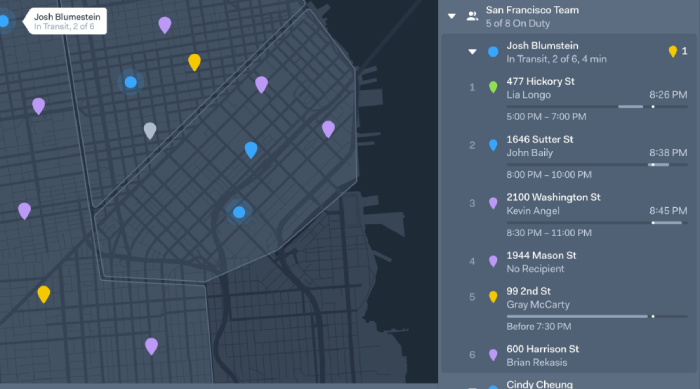
Onfleet’s email support is available with all four plans, while phone support starts with a Basic plan. Priority support is limited exclusively to the highest (Professional) tier.
Who should use Onfleet: Onfleet is intended for small to medium 3PL businesses that want features beyond their weight class and a clean UI, but already use a lot of third-party apps to automate how they manage more complex tasks and operations in the supply chain.
Pros & Cons
Pros:
- Free 14-day trial
- Live route tracking
- Predictive ETAs
- Complete fleet management
Cons:
- Entry-level package doesn’t include route optimization
- Pricing ramps up quickly for higher-tier plans
- Can have reliability issues
#3 Optimoroute - Best for small 3PL fleets and long-haul routes
| TOTAL SCORE: |
4.0 |
| PRICE: |
from $588 |
| # OF TASKS (STARTER PLAN): |
700 |
Optimoroute is a route optimization app that features multi-day and long-hour route planning, fleet coordination, driver workflows, and advanced route customization.

Optimoroute offers a 30-day free trial with an option to schedule a free demo. Subscription starts at $39 per driver per month, with a 10% discount if you want to be billed annually. You also have a chance to upgrade to a Pro plan that you’ll pay $49 per driver per month.
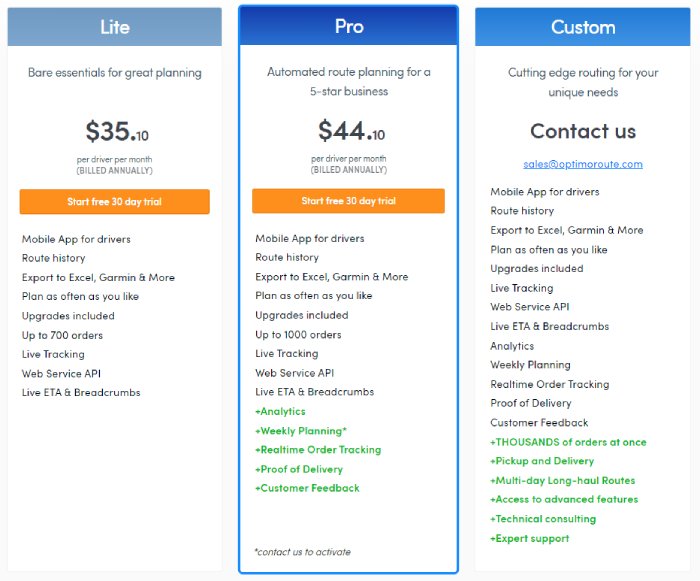
The biggest issue for many 3PLs is that you’re billed per driver. This may work for smaller fleets but even then it’s expensive:
- 5 driver fleet - at least $195 per month ($2,340 annually)
- 10 driver fleet - at least $390 per month ($4,680 annually)
This can be a problem for larger fleets. But that’s why you can contact Optimoroute to create a custom plan based on your needs (custom features) and your budget.
At the basic plan you’re also limited to just 700 tasks. This again is spread across your vehicles. So for a fleet of just five vehicles you can plan 140 tasks per month. Each task beyond that limit is additionally billed.
What Optimoroute has going for it is that you really can plan optimal routes for your drivers. You can do this daily or dynamically (while drivers are in the field), across multiple days or weekly, and even long-haul routes that take more time to complete.
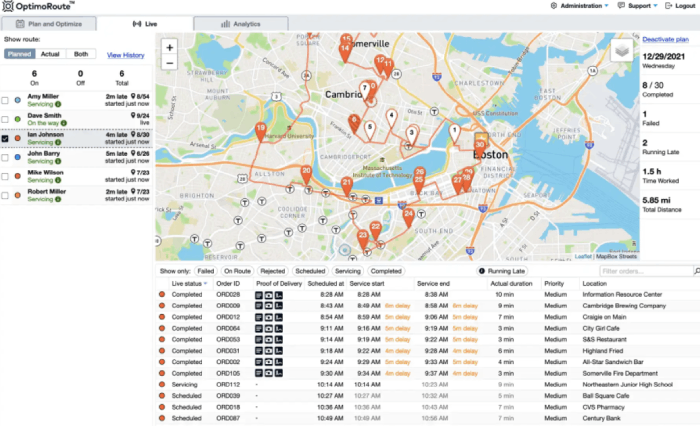
Planning is also easier with Optimoroute thanks to its Route History feature. This allows you to access automatically stored routes that you’ve already planned to re-use or simply adjust them with new stops. This cuts the route planning time significantly.
You can also customize routes. Optimoroute allows you to plan routes by adding constraints such as traffic patterns, driver workflows (regulated breaks or max. driving hours), or different vehicle specifications. And you can do this across your entire fleet, which means you can coordinate tasks between multiple drivers and routes.
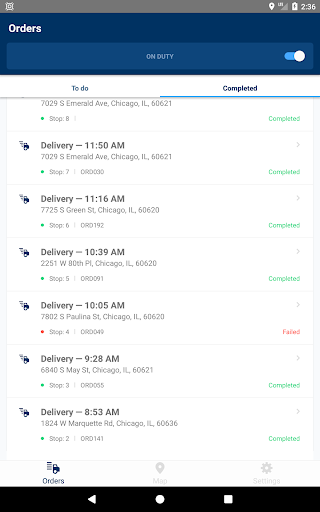
Customer service is available through the Help Center on their website, and via email.
Who should use Optimoroute: Optimoroute is a solid route optimization tool with a lot of customization that’s ideal for smaller 3PLs or those that complete fewer tasks but over longer distances.
Pros & Cons
Pros:
- 30-day free trial
- Customizable route optimization
- Planning routes using historical data
- Multi-day route planning
- Dynamic route adjustment
Cons:
- Billing per driver
- Low task limit
- No cash on delivery collection or verification
- No live support
#4 Road Warrior - Best low-priced option for basic route planning
| TOTAL SCORE: |
3.8 |
| PRICE: |
from $120 |
| # OF TASKS (STARTER PLAN): |
1,500 |
RoadWarrior is a basic route planning software. But this solution offers core multi-stop routing at an extremely low cost (lowest price on this list).

Road Warrior’s lowest tier is their free basic plan. But since it has an 8-stop limit per route, it isn’t much different from route optimization using Google Maps.
On the other hand, RoadWarrior’s Pro plan costs $10 per month per vehicle and it’s designed for drivers. This is a solid solution for smaller 3PLs that don’t rely on a logistics manager to run operations.
So the best option for small-to-mid sized 3PLs is to choose RoadWarrior’s Flex plan that’s created for teams.
Flex plans also start at $10 per driver, but with an additional $10 for access to the online control panel for logistics managers. For each new driver, you will have to pay another $10. So with a fleet of five vehicles you are billed $60 each month (or $720 per year). Which still makes it the most affordable option on this list.
RoadWarrior’s Flex plans for teams have a limit of 200 stops per route with a daily total limit of 500 tasks and 500 tasks per driver (15,000 stops per month). But across all three tiers you get the same reliable route optimization engine that you can use to plan routes around traffic patterns, driver availability, workflows and schedules.
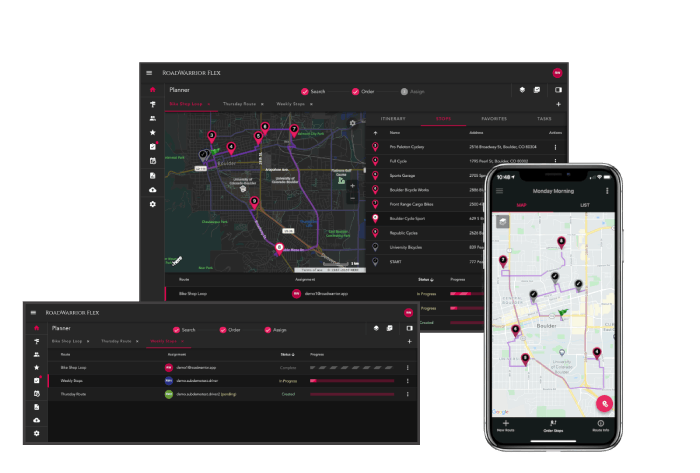
Paid plans also come with data synced and backed up cloud-based servers that also provide basic reporting. In addition, you get dispatching software, licenses for multiple users, on-route task management for drivers, as well as route tracking.
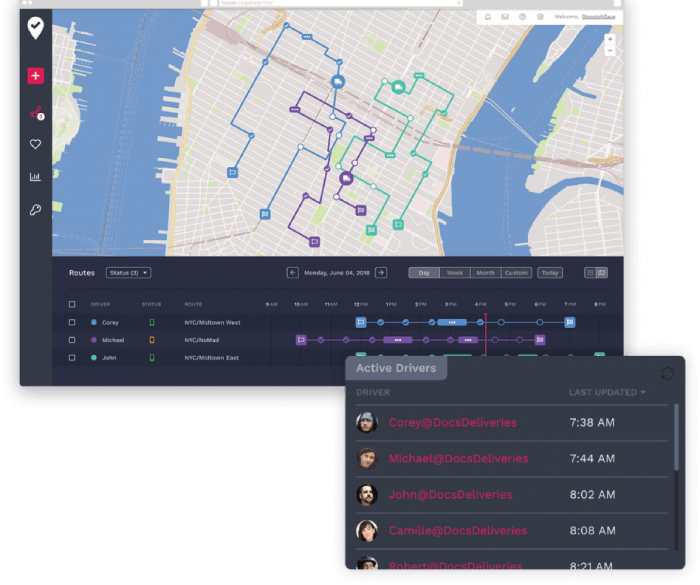
With each plan you receive RoadWarrior’s Getting Started Tutorial and a modest help guide via their website. And while there’s no live support, you can contact their customer support through email.
Who should use RoadWarrior: RoadWarrior is a budget-friendly option for small 3PLs with solid route planning and optimization essentials, at a price that’s hard to beat.
Pros & Cons
Pros:
- Free plan
- Low-cost premium plans
- User-friendly
- Route tracking and monitoring
- Integration with FedEx
Cons:
- Limited features for teams
- Basic analytics
- No live support
And the verdict is…
Based on the results of this review, eLogii definitely comes out on top:
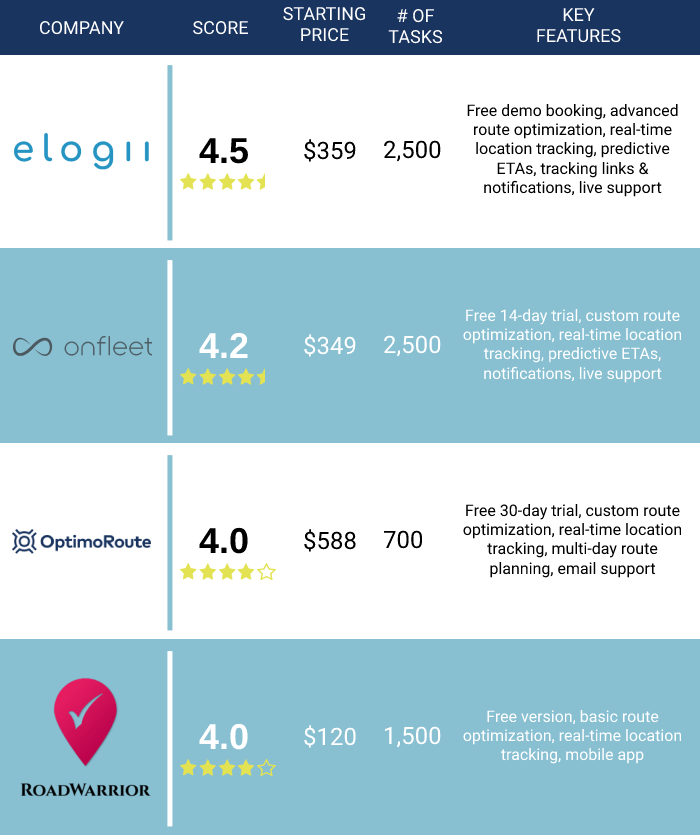
It’s got a massive feature list (98 total!). And its ability to reliably generate optimized routes in minutes is unmatched.
Which is why it’s the best overall route optimization solution for 3PLs.
That said:
To crown one solution as the best, we need to hear from you and consider the factors that affect your business.
So our advice is to…